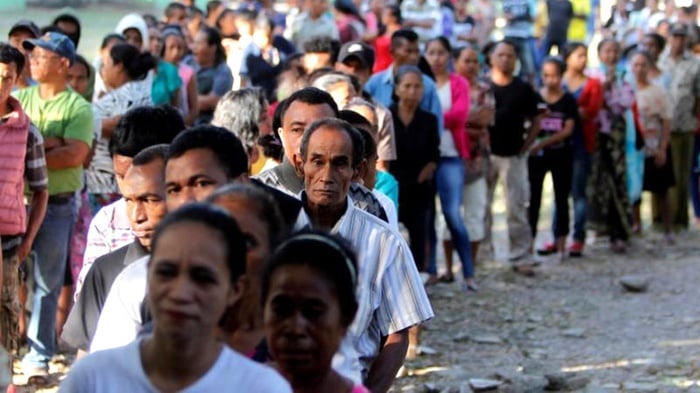 |
| Loron Economico |
As contas públicas timorenses terminaram 2015 com um excedente de 471,8 milhões de dólares, em grande parte devido à "forte posição fiscal" do Fundo Petrolífero e do Fundo de Doadores, segundo um relatório do Ministério das Finanças.
O boletim trimestral fiscal do Ministério das Finanças relativo ao terceiro trimestre de 2015, publicado na página do Ministério das Finanças, explica que se fosse excluído o Fundo Petrolífero (FP), principal fonte de receita pública, Timor-Leste tinha terminado 2015 com um défice de 835,9 milhões de dólares.
Segundo o relatório, 2015 terminou com uma "capacidade líquida de empréstimo de 123,7 milhões de dólares" que foi "investida em ativos financeiros do FP".
As receitas petrolíferas do Estado timorense foram de 1.305,6 milhões de dólares no ano passado, a que se somam 139,1 milhões de dólares do Fundo de Doadores e 122,2 milhões de dólares de receitas não petrolíferas.
Em termos globais, o Estado retirou do FP 1.278,5 milhões de dólares, dos quais 638,5 milhões correspondem ao valor de Rendimento Sustentável Estimado (RSE) e os restantes 640 milhões são levantamentos acima desse valor sustentável.
Os impostos representaram a maior fatia das receitas não petrolíferas (72,1%).
Os impostos sobre rendimentos subiram 0,73%, para 53,3 milhões, os impostos sobre bens e serviços caíram 5,4%, para 60,2 milhões de dólares, e os impostos sobre comércio internacional caíram 9,5%, para 12,1 milhões de dólares.
No capítulo das outras receitas foram contabilizados 47,4 milhões de dólares provenientes de receitas imobiliárias (que mais do que duplicaram, de 3,4 em 2014, para 8,7 milhões em 2015). Houve também um aumento de 16,6% em vendas de bens e serviços, nomeadamente taxas de tribunais, receitas médicas e hospitalares, licenças e outras.
No capítulo das despesas, o Estado timorense gastou 1.142,9 milhões de dólares no ano passado.
Os gastos com salários aumentaram 6%, de 168,6 para 178,7 milhões de dólares, com bens e serviços caíram 55,5 milhões, para 389,7 milhões e com benefícios sociais aumentaram 48,8%, para 173,6 milhões. Outros gastos aumentaram 44,7%, para 263,9%, em parte devido ao maior apoio a organizações da sociedade civil.
Os gastos do FD alcançaram os 121,6 milhões - 16,1 milhões em salários, 48,7 milhões em bens e serviços e 56,7 milhões noutros gastos.
As despesas do FP alcançaram os 1.293,9 milhões de dólares, dos quais 15,4 milhões corresponderam a despesas de gestão do fundo e 1.278,5 milhões foram transferidos para o Governo.
Segundo o boletim, as quatro áreas mais importantes de despesas do Governo em 2015 foram Assuntos Económicos, Serviços Públicos Gerais, Proteção Social e Educação.
"Assuntos Económicos representou 30,7% das despesas, a maior de todas as categorias, o que reflete o compromisso do Governo em projetos de infraestruturas ao longo de 2015, especialmente no setor dos transportes e eletricidade", refere o boletim.
Os serviços gerais representaram 28,7% do total das despesas em 2015, incluindo-se nesta categoria as transferências para a Região Administrativa Especial de Oe-Cusse Ambeno e a zona especial de economia de mercado social de Oe-Cusse Ambeno e Ataúro.
Os gastos com educação (11,1% do total das despesas) centraram-se em particular no ensino primário e básico.
As pensões dos veteranos e outras formas de assistência rreceberam a maior fatia dos gastos em proteção social, que ascenderam a 13,8% do total das despesas para 2015.
Lusa 06 Abr, 2016, 07:06 | Economia
http://www.rtp.pt/noticias/economia/timor-leste-terminou-2015-com-saldo-publico-de-4718-milhoes-de-dolares_n909328















